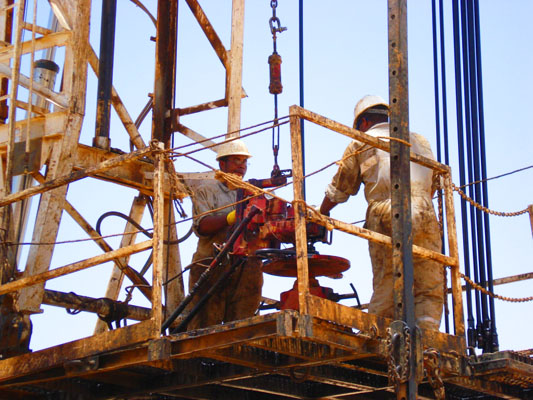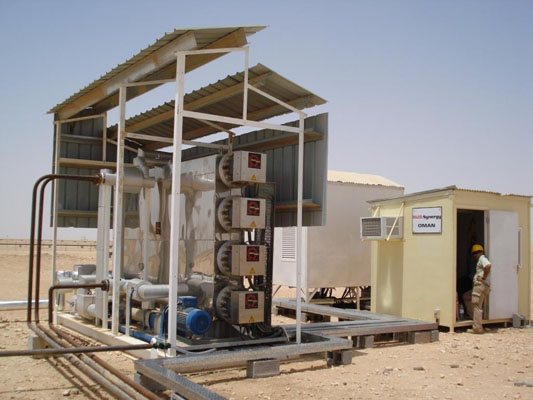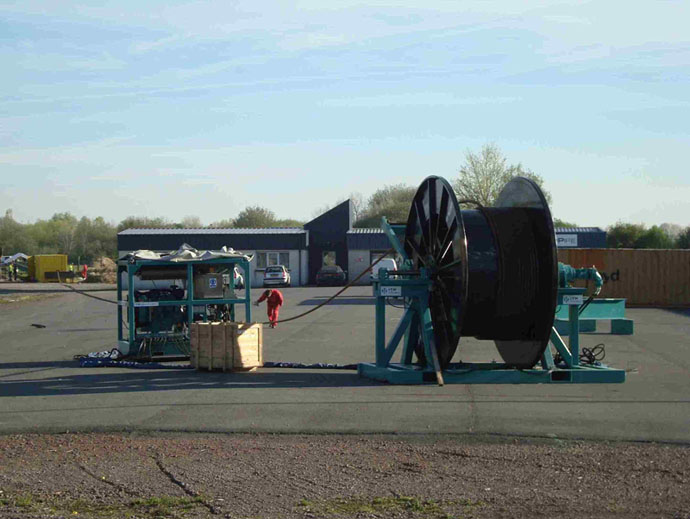TOR Technology
 Several in situ well-heating technologies have been tested over time, such as electrical heating (resistive, inductive, skin effect…) or downhole burners. For reasons that are linked as much to their prices as to their lack of robustness, these technologies have all been abandoned to the benefit of hot fluid injection techniques (water, oil or steam) that localize the "sensitive" elements of the systems at the surface where they are readily accessible for maintenance, upgrading and repair.
Several in situ well-heating technologies have been tested over time, such as electrical heating (resistive, inductive, skin effect…) or downhole burners. For reasons that are linked as much to their prices as to their lack of robustness, these technologies have all been abandoned to the benefit of hot fluid injection techniques (water, oil or steam) that localize the "sensitive" elements of the systems at the surface where they are readily accessible for maintenance, upgrading and repair.
On the whole, heat injection and oil production are separate in time (huff and puff) or in space (injector/producer wells, for example SAGD). However, due to the poor (or the absence of) thermal insulation of the injection lines, high thermal losses are incurred, and consequently only shallow or high productivity reservoirs can be equipped. Moreover, in some regions the water supply and the cost of CO2 emissions can be some issues.
TOR technology is quite robust and simple but will not compete with all the methods to heat up the reservoirs. The typical characteristics where the TOR technology would provide interesting results are the following:
- Existing driving mechanism : primary production and natural or forced waterflood
- 8 to 20° API
- 300 to 1000m deep reservoirs
- 500 to 2500m long horizontal sections
TOR technology is also adapted to the following fields:
- Where steam drive is not economical: small fields, peripheral wells, high pressure reservoir.
- Stimulation, pre-heating and early production in steam flood, solvent flood, SAGD, VAPEX, in situ combustion, …
Features
The vertical section is completed with a conventional production tubing and pump.
Part of the oil produced goes to a buffer tank, from where it is pumped to a heater and further into an insulated TOR coiled tubing run till the toe of the horizontal well. There this hot oil is mixed with the produced fluids. The TOR tubing is a pipe-in-pipe with insulating material in the space between the pipes.
During their flow in the horizontal section, the heated fluids heat the formation by conduction-> reduction of oil viscosity in the vicinity of the well -> increased flow rate.
There is no intention of liquid injection within the formation. Heating by conduction requires an important temperature gradient between the hot source and the cold one.
Applications
The implementation of the first TOR pilot started in May 2005 on a well in Peru. The TOR technology improved the production over 200 percent.
In 2008, an industrial implementation was done in Sultanate of Oman with a strong production increase. This project helped us to show the feasibility of our system and its high rentability regarding the production increase compared to its low cost.
For this project the coiled tubings was insulated in France and locally welded and reeled. The coiled tubing insertion was performed by a worldwide leading company for coiled tubings operations.
Benefits
 Contrary to others solutions, the TOR heating technology employs an injection pipe-in-pipe with a high temperature, high performance insulating system installed in the producing well, so as to carry the heated fluid down to the productive zone with very limited thermal losses. It is cheaper than the other competitive thermal technologies.
Contrary to others solutions, the TOR heating technology employs an injection pipe-in-pipe with a high temperature, high performance insulating system installed in the producing well, so as to carry the heated fluid down to the productive zone with very limited thermal losses. It is cheaper than the other competitive thermal technologies.
Among the advantages of the TOR technology is the possibility to install it on wells that were previously not amenable to thermal assistance:
1.Technically, even long offset or deep wells can be treated because the TOR high performance insulation can preserve a high temperature at the injection pipe outlet.
2.Economically, less-productive wells can be treated because the heat losses to non-productive zones are reduced.
This is particularly true with heavy oils where the viscosity decreases drastically when the temperature is increased and with waxy crude wells where the pores and the wellbore may be plugged. Also, the insulated pipe can be used to inject any fluid at a controlled temperature, which may offer additional advantages. Here below are summarized the main advantages of the new technology.
Heating the reservoir this way has also the following benefits:
- Possibility of designing light units on any heavy oil field
- No water required
- No extra water separation required
- Most efficient way of using the energy available on the field
- Possibility of combining the TOR technology with other EOR technologies.
